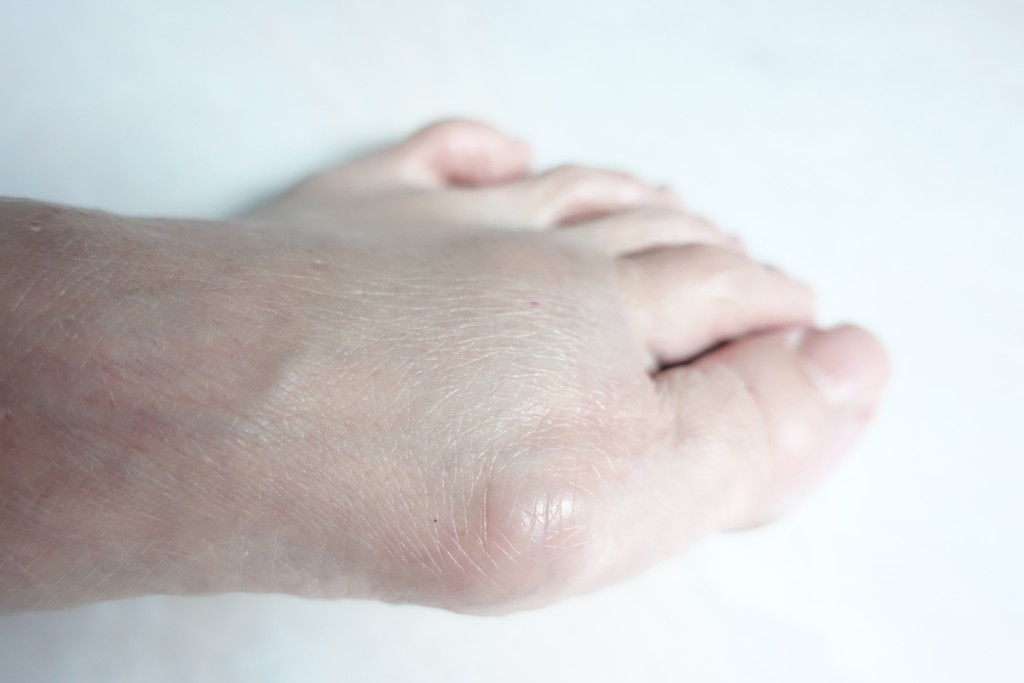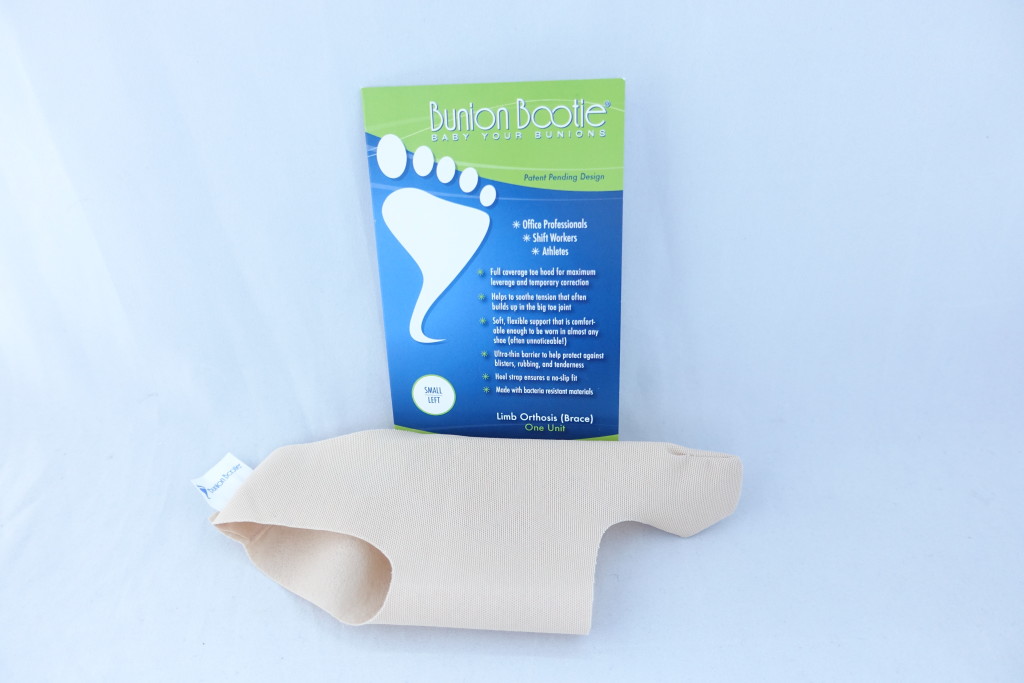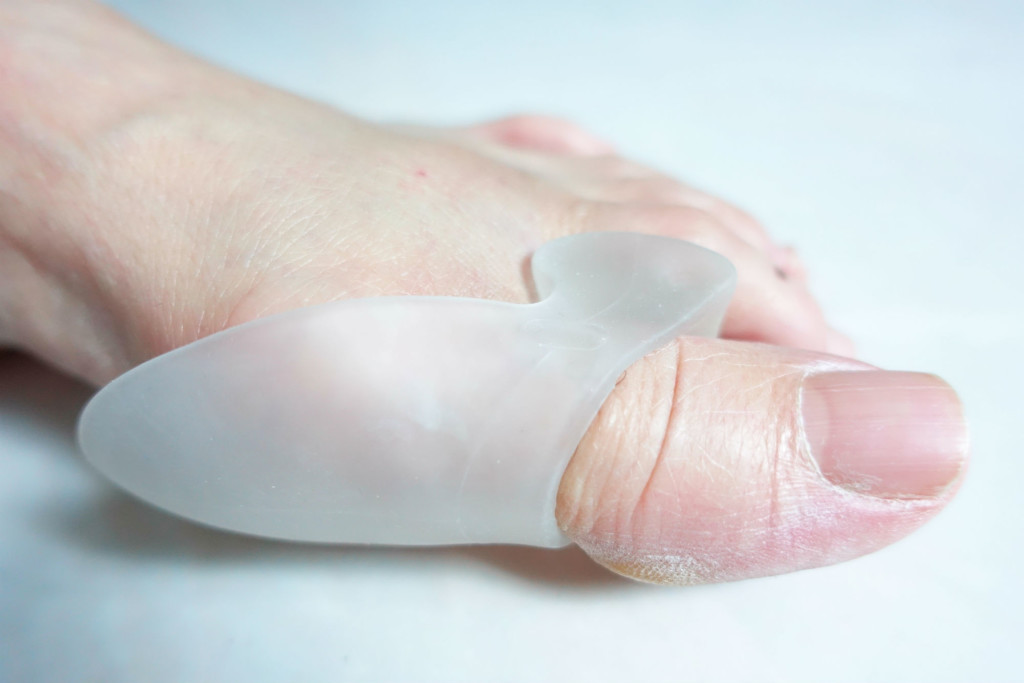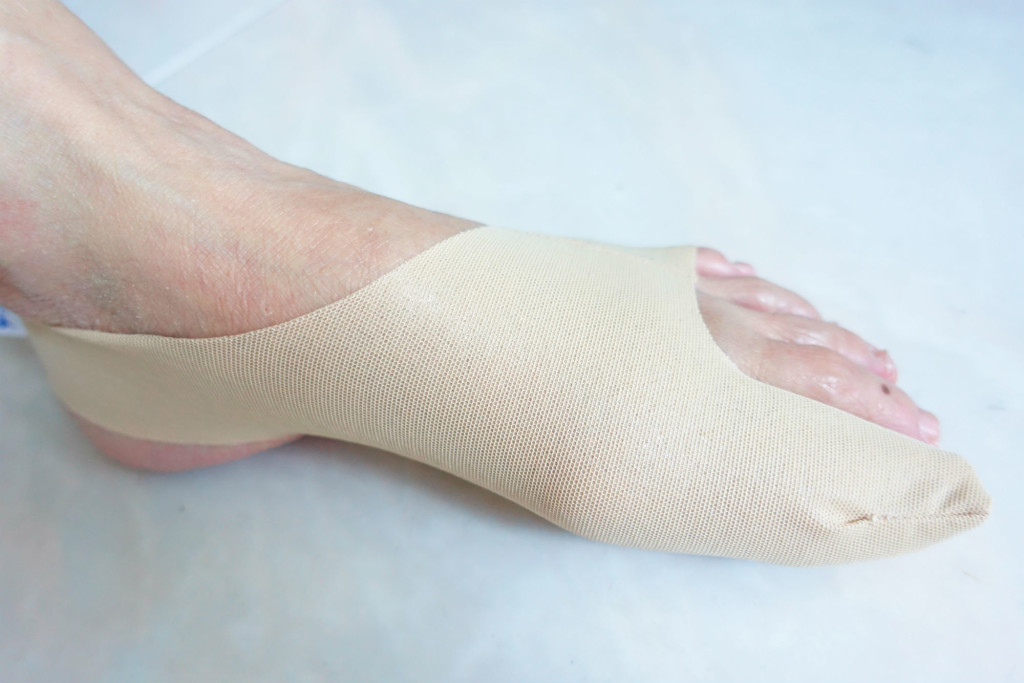A bony bump that forms on the joint at the base of your big toe, bunions are commonly caused by tight, narrow shoes such as pointed high heels.
Who is at risk of developing bunions?
Explained Png Chang Liang, 28, Owner of Feet Care Pte Ltd, “A bunion isn’t a new growth – it happens when the joint is pushed inwards. More ladies than men get bunions as many of them are required to wear high heels for work. When you wear pointed high heels, the toes are forced to bend in an artificial manner and over time, it develops into a bunion.”
Besides high heels, people with flat feet can also develop bunions. Said Png, “The feet tends to roll inwards when walking, if you are flat-footed. That’s called pronation. As a result, there is more pressure on the inside of your foot and this pushes the joints outwards, which develops into a bunion.”
Bunions are also hereditary and Png said that some people can get away with years of high heels usage without developing a bunion, but others are not so lucky. He added, “If you look at your mum and your sister for example, and they have bunions, then there is a high chance that you will develop one as well.”
Some activities have a higher tendency of developing bunions
Doing certain activities will also have a tendency to make people develop bunions, Png explained, “For example, in ballet, the girls are constantly on their toes – and the pressure on their toes will cause bunions.”
![Ballet dancers are at high risk of developing bunions, according to Png. [Photo taken from www.fanpop.com]](https://www.prischew.com/wp-content/uploads/ballet-dancers-ballet-24899683-2560-1758-1024x703.jpg)
Ballet dancers are at high risk of developing bunions, according to Png.
[Photo taken from www.fanpop.com]
Three stages of bunion growth
Png explained that there are three stages of bunion growth.
The first stage is where the big toe begins to turn inwards towards the second toe, but they are not touching yet.
The second stage is when the big toe is touching the second toe, even at rest position.
In the third and final stage, the big toe has started to cross over the second toe. This stage is usually very painful.
According to Png, people who get Stage 3 bunions are usually in their fifties and sixties. He said, “Younger people generally get earlier-stage bunions and these get worse over time. Years of wearing poor footwear without doing anything about it, will cause the bunion to progress to the later stages.”
Added Png, “Surgery is the recommended method of treatment for a person whose bunions have reached this stage. Stage 3 bunions are not life-threatening, but they cause plenty of discomfort, and surgery is the only way to stop this pain completely.”Products that help to relieve your bunions
However, if you have developed a bunion, Feet Care has products that can help you to relieve some of the discomforts caused by the bunions. But Png stressed that these do not cure the bunion completely, and that the only form of cure is still surgery.
A one-stop shop for your foot needs, Feet Care prides themselves in being able to provide a solution to relieve any feet-related problems, ranging from mild discomforts to extreme pains.
Their products are sourced from Germany and the United States, according to Png.
Stage 1 Bunion Pack
Png prescribed the Stage 1 bunions pack, comprising of a Bunion Bootie and a Gel Bunion Cushion for my mother, who had Stage 1 bunions. This will set a sufferer back by $60.00.
The Gel Bunion Cushion provides relief from the discomfort that the bunions would cause. It is very thin and soft and as such, you would be able to wear your normal shoes, without the bunion rubbing on the shoes.
For the Bunion Bootie, this is marketed as being the first of its kind in bunion treatment today, and may help anyone with bunion pain, whose bunions have not reached an extreme stage yet.
Mum tried the products for a couple of days and she felt that they provided comfort for her bunion. The Gel Bunion Cushion, in her opinion, had helped to prevent the rubbing of the bunion against her shoes. But at the same time, she thought that it needed some getting used to, as the wedge of gel between the big toe and the second toe had caused a little discomfort.
She also added that the while Bunion Bootie helps with bunion discomforts, it does need some getting used to. On the first day, she spent a few hours walking around the house with this on, and mentioned that it didn’t feel natural, probably because she isn’t really used to wearing socks in the house. However she told me that she slowly grew more used to wearing them, as time passed.
Added Png, “It’s important to gradually ease into wearing these products. Don’t wear it for prolonged periods without warming up, as it may cause you to feel a little sore. We recommend starting slowly, and if you feel sore, take it off and try again the next day. Slowly increase the length of time you wear these products and you will get used to them over time.”
Png recommended that at the beginning, a person should wear these products for a year, on a daily basis, in order to arrest the growth of the bunion. Then subsequently wear the products a few times a week till they feel comfortable and don’t need to wear them any longer. He added that the analogy is similar to wearing braces and retainers.
Stages 2 and 3 Bunion Packs
The Stage 2 Bunion Pack provided by Feet Care Pte Ltd will set you back by $100 and comprises of the Bunion Bootie, Gel Bunion Cushion as well as a Bunion Night Splint.
The Bunion Night Splint holds the toes in the right position throughout the night. Its purpose is to soothe the pain caused by the bunion and prevent it from getting worse.For the Stage 3 Bunion Pack, it consists of a Bunion Night Splint and a Gel Bunion Sleeve. It will set you back by $90.
The Gel Bunion Sleeve helps to protect the bunion and stops it from rubbing against your shoes. In this way, it controls the development of your bunion and at the same time, relieves the pain when you are wearing high-heeled shoes.
Added Png, “For Stage 3 bunions, our products help to pull the toes apart so that they don’t come together. It alleviates the pain and prevents the bunion from worsening. But by the time the bunion reaches Stage 3, we cannot guarantee that our products will correct your bunion as the toes are already fixed in position. The earlier the bunion is arrested, the better.”For more information on bunions and how to take care of them, go to Feet Care Pte Ltd’s website at http://bunioncare.asia.
Thank you, Feet Care, for the opportunity to try out the Bunion Care Pack.

![How do you ease your bunions? [Photo taken from americanfoot.com]](https://www.prischew.com/wp-content/uploads/Bunions.jpg)

![A more painful looking bunion. [Photo taken from www.alignmentrescue.com]](https://www.prischew.com/wp-content/uploads/DSCN0647-e1378654328711-768x1024.jpg)



![Bunion Night Splint is recommended for later-stage bunions. [Photo from bunion care.asia]](https://www.prischew.com/wp-content/uploads/product-bunion-night-splint-2.png)
![Gel Bunion Sleeve. [Photo from BunionCare.asia]](https://www.prischew.com/wp-content/uploads/product-gel-cushion-2.png)
Leave a Comment